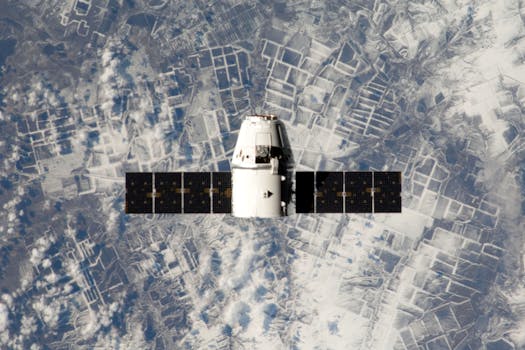Satellites as Sentries: Advanced Technologies for Global Communication and Surveillance

Satellites as Sentries: Advanced Technologies for Global Communication and Surveillance
Satellites as sentries for global communication and surveillance have become an essential part of modern life. Satellites as sentries are being used for a variety of purposes, including navigation, communication, weather forecasting, and Earth observation. The use of satellites as sentries has revolutionized the way we communicate, navigate, and monitor the environment.
The development of satellite technology has been rapid in recent years, with new advancements being made regularly. One of the most significant advancements in satellite technology is the development of high-throughput satellites (HTS). HTS are designed to provide high-speed internet access to remote and underserved areas, and they have the potential to bridge the digital divide between urban and rural areas.
History of Satellite Technology
The first satellite was launched in 1957 by the Soviet Union, and it was called Sputnik 1. Since then, thousands of satellites have been launched into space, and they have become an essential part of modern life. The first commercial satellite was launched in 1962, and it was called Telstar 1. Telstar 1 was used for transatlantic communications, and it marked the beginning of the satellite communications industry.
In the 1970s and 1980s, satellite technology began to be used for navigation and weather forecasting. The first GPS satellite was launched in 1978, and it was used for navigation and timing. The first weather satellite was launched in 1960, and it was used to monitor the weather and provide forecasts.
Types of Satellites
There are several types of satellites, including communications satellites, navigation satellites, weather satellites, Earth observation satellites, and experimental satellites. Communications satellites are used for transmitting data, voice, and video signals around the world. Navigation satellites are used for providing location information and timing signals. Weather satellites are used for monitoring the weather and providing forecasts. Earth observation satellites are used for monitoring the environment and providing data on the Earth’s natural resources.
Experimental satellites are used for testing new technologies and conducting scientific experiments. These satellites are often used for testing new propulsion systems, new materials, and new sensing technologies. They are also used for conducting experiments in space, such as studying the effects of zero gravity on living organisms.
Applications of Satellites
Satellites have a wide range of applications, including global communication, navigation, weather forecasting, Earth observation, and national security. Satellites are used for providing high-speed internet access to remote and underserved areas, and they are used for navigating and tracking vehicles, aircraft, and ships.
Satellites are also used for monitoring the weather and providing forecasts. They are used for tracking hurricanes, storms, and other severe weather events. Satellites are also used for monitoring the environment and providing data on the Earth’s natural resources. They are used for tracking deforestation, oil spills, and other environmental disasters.
Satellites are also used for national security purposes, such as monitoring the borders and tracking the movement of troops and equipment. They are used for providing communications and navigation services to military personnel, and they are used for conducting reconnaissance and surveillance missions.
Conclusion
In conclusion, satellites as sentries for global communication and surveillance have become an essential part of modern life. The use of satellites has revolutionized the way we communicate, navigate, and monitor the environment. With the advancement of technology, satellites are now capable of providing high-speed internet, navigating, and monitoring the environment. The applications of satellites are vast, and they will continue to play a critical role in shaping the future of our world.

